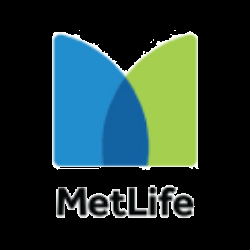Overall, MetLife demonstrates a strong business model with a solid market position and diversified revenue streams. The New Frontier strategy promises growth potential, although challenges such as currency fluctuations and investment income volatility may affect future performance. The company remains well-capitalized and committed to delivering shareholder value through disciplined management and strategic investments.
Analysis Date: February 6, 2025
Last Updated: March 12, 2025
Trailing Twelve Months (TTM) values provide a view of the company's performance over the last year.
Graham Value Metrics
Benjamin Graham's value investing approach focuses on finding stocks with a significant margin of safety between their intrinsic value and market price.
Intrinsic Value
Estimated fair value based on Graham's formula
$241.22
Current Market Price: $66.61
IV/P Ratio: 3.62x (>1.0 indicates undervalued)
Margin of Safety
Gap between intrinsic value and market price
72.0%
Graham recommended a minimum of 20-30% margin of safety
Higher values indicate a greater potential discount to fair value
ROE: 15.513902398415661
ROA: 0.18761338358006485
Gross Profit Margin: 100.0
Net Profit Margin: 6.260608803892724
Trailing Twelve Months (TTM) values provide a view of the company's performance over the last year.
Strong Return on Equity
A return on equity (ROE) of 15.51% demonstrates effective use of equity to generate profits, indicating a strong performance in returning value to shareholders.
Healthy Gross Profit Margin
The gross profit margin of 100% suggests a robust ability to convert sales into actual profit before overhead costs, indicating strong pricing power.
Narrow Operating and Net Profit Margins
6.34%
Operating Profit Margin
Operating profit margin (6.34%) and net profit margin (6.26%) are relatively low, indicating that a significant portion of revenue is consumed by costs.
About Profitability Metrics
Profitability metrics measure a company's ability to generate earnings relative to its revenue, operating costs, and other relevant metrics. Higher values generally indicate better performance.
Return on Equity (ROE)
Measures how efficiently a company uses its equity to generate profits
15.51%
10%
15%
Higher values indicate better returns for shareholders
TTM (as of 2025-04-16)
Return on Assets (ROA)
Measures how efficiently a company uses its assets to generate profits
0.19%
3%
7%
Higher values indicate better asset utilization
TTM (as of 2025-04-16)
Gross Profit Margin
Percentage of revenue retained after accounting for cost of goods sold
100.00%
20%
40%
Higher values indicate better efficiency in production
TTM (as of 2025-04-16)
Net Profit Margin
Percentage of revenue retained after accounting for all expenses
6.26%
8%
15%
Higher values indicate better overall profitability
TTM (as of 2025-04-16)
Low Debt Levels
0.68
Debt-to-Equity Ratio
2.76%
Debt-to-Assets Ratio
A debt-to-equity ratio of 0.68 and debt-to-assets ratio of 2.76% indicate that the company is not heavily leveraged, suggesting a lower financial risk.
Good Interest Coverage
4.32
Interest Coverage Ratio
An interest coverage ratio of 4.32 indicates that the company generates sufficient earnings to cover its interest obligations, reflecting strong financial stability.
Poor Liquidity Ratios
Current, quick, and cash ratios all being zero indicate a concerning liquidity position, suggesting potential difficulties in meeting short-term obligations.
About Financial Health Metrics
Financial health metrics assess a company's ability to meet its financial obligations and its overall financial stability.
Debt to Equity Ratio
Total debt divided by total equity
0.68x
1.0x
2.0x
Lower values indicate less financial leverage and risk
Less than 1.0 is conservative, 1.0-2.0 is moderate, >2.0 indicates high risk
Q4 2024
Current Ratio
Current assets divided by current liabilities


